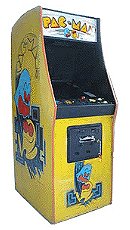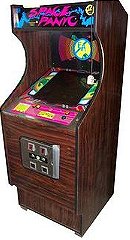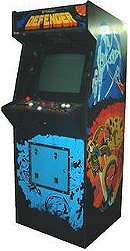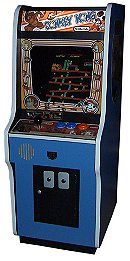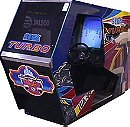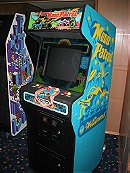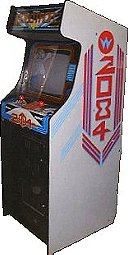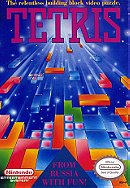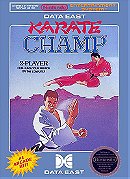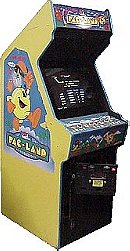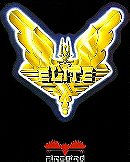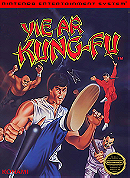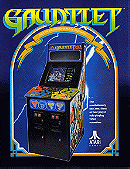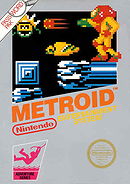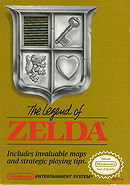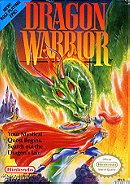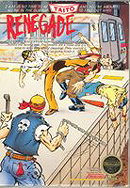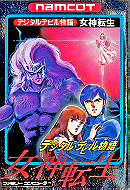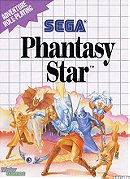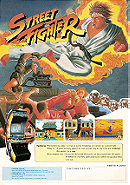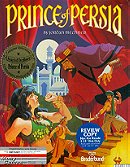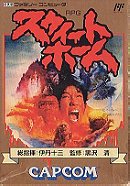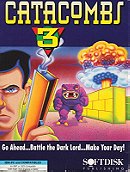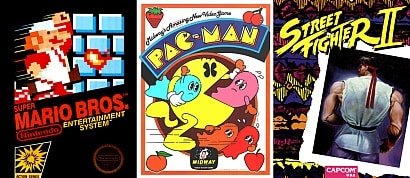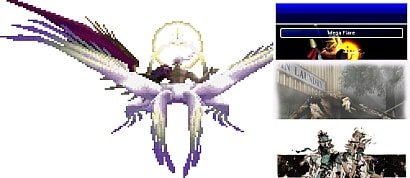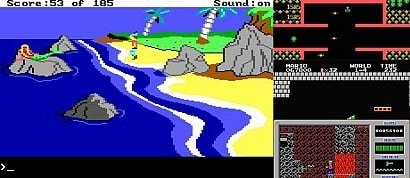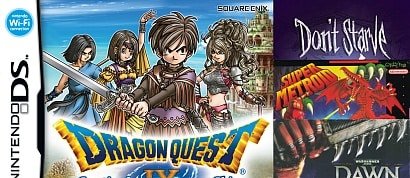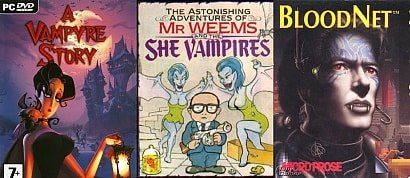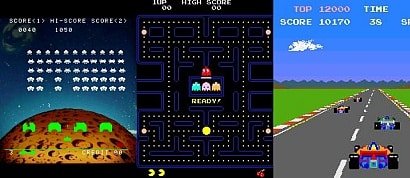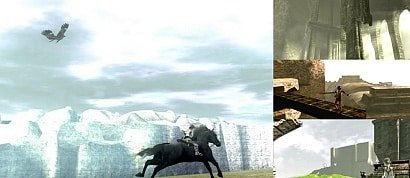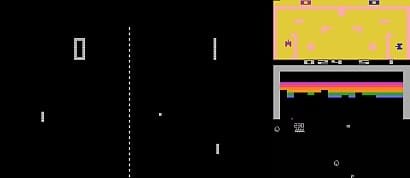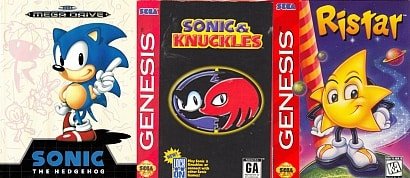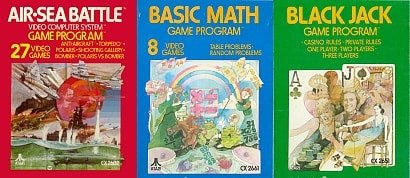Most Important Games of all Time
Sort by:
Showing 38 items
Rating:
List Type:
Mystery House - Macintosh
Mystery House (1980), Roberta Williams's game for the Apple II, was the first graphic adventure game on home computers. Graphics consisted entirely of static monochrome drawings, and the interface still used the typed commands of text adventures. It proved very popular at the time, and she and husband Ken went on to found Sierra On-Line, a major producer of adventure games.
Pac-Man - Arcade
Pac-Man (1980) was the first game to achieve widespread popularity in mainstream culture and the first game character to be popular in his own right.
CelShader's rating:


Space Panic - Arcade
Space Panic (1980) is sometimes credited as the first platform game, with gameplay centered on climbing ladders between different floors.
Defender - Arcade
Defender (1980) established the scrolling shooter and was the first to have events (e.g., enemy movement) taking place outside the player’s view. A radar was displayed showing a map of the whole playfield.
Battlezone - Arcade
Battlezone (1980) used wireframe vector graphics to create the first true three-dimensional game world.
Donkey Kong - Arcade
Donkey Kong (1981), an arcade game created by Nintendo's Shigeru Miyamoto, was the first game that allowed players to jump over obstacles and across gaps, making it the first true platformer. This game also introduced Mario, an icon of the genre.
CelShader's rating:


Turbo - Arcade
Turbo (1981), by Sega, was the first racing game with a third-person perspective, rear-view format.
Moon Patrol - Arcade
Moon Patrol (1982) introduced the parallax scrolling technique in computer graphics.
Robotron: 2084 - Arcade
A dual-joystick control scheme was developed for Robotron (1982) to provide the player with more precise controls. Most modern video game systems employ a dual-stick design. Other games, such as Inferno, Smash TV, Total Carnage, Geometry Wars, Everyday Shooter, and Super Stardust HD, all borrow the basic gameplay elements.
Pole Position - Arcade
Pole Position (1982), by Namco, used sprite-based, pseudo-3D graphics when it refined the "rear-view racer format" where the player’s view is behind and above the vehicle, looking forward along the road with the horizon in sight. The style would remain in wide use even after true 3D graphics became standard for racing games.
Mario Bros. - Arcade
Mario Bros. (1983), developed by Shigeru Miyamoto, offered two-player simultaneous cooperative play and laid the groundwork for two-player cooperative platformers.
CelShader's rating:


Congo Bongo - Colecovision
Congo Bongo (1983), developed by Sega, was the first isometric platformer.
Dragon's Lair - Arcade
Dragon's Lair (1983) was the first Laserdisc video game, and introduced full-motion video to video games.
King's Quest I: Quest for the Crown - PC Games
King's Quest (1984) was created by Sierra, laying the groundwork for the modern adventure game. It featured color graphics and a third-person perspective. An on-screen player character could be moved behind and in front of objects on a 2D background drawn in perspective, creating the illusion of pseudo-3D space. Commands were still entered via text.
Tetris - Famicom and NES
Tetris (originally created in 1984) set the standard for all puzzle-games to follow. The game is available for nearly every video game console and computer operating system, as well as on devices such as graphing calculators, mobile phones, portable media players, PDAs, Network Music Players and even as an Easter egg on non-media products like oscilloscopes.
(thanks to Prelude for the suggestion)
(thanks to Prelude for the suggestion)
CelShader's rating:


Kung-Fu Master - Arcade
Kung-Fu Master (1984), a Hong Kong cinema-inspired action game, laid the foundations for scrolling beat 'em ups with its simple gameplay and multiple enemies. It is widely credited as the first Beat 'em Up.
Karate Champ - Famicom and NES
Karate Champ (1984), Data East's action game, is credited with establishing and popularizing the one-on-one fighting game genre, and went on to influence Yie Ar Kung-Fu.
Pac-Land - Arcade
Namco took the scrolling platformer a step further with Pac-Land (1984), which was the first game to feature multi-layered parallax scrolling and closely resembled later scrolling platformers like Super Mario Bros. (1985) and Wonder Boy (1986)
Elite - PC Games
Elite (1984), designed by David Braben and Ian Bell, ushered in the age of modern style 3D graphics. The game contains convincing vector worlds, full 6 degree freedom of movement, and thousands of visitable planetary systems. It is considered a pioneer of the space flight simulator game genre.
Yie Ar Kung-Fu - Famicom and NES
Konami's Yie Ar Kung Fu (1985), which expanded on Karate Champ by pitting the player against a variety of opponents, each with a unique appearance and fighting style.
Gauntlet - Arcade
Gauntlet (1985) was the first game to simultaneously allow multiple-player action and force co-operative gameplay. Released during the emergence of role-playing games, the game was one of the first true "dungeon crawl" games.
(thanks to Prelude for the suggestion)
(thanks to Prelude for the suggestion)
The Bard's Tale - PC Games
The Bard's Tale (1985) by Interplay Entertainment is considered the first computer role-playing game to appeal to a wide audience that was not matched until Blizzard Entertainment's Diablo.
Metroid - Famicom and NES
Metroid (1986) was the earliest game to fuse platform game fundamentals with elements of action-adventure games, alongside elements of RPGs. These elements include the ability to explore an area freely, with access to new areas controlled by either the gaining of new abilities or through the use of inventory items.
The Legend of Zelda - Famicom and NES
The Legend of Zelda (1986) developed by Shigeru Miyamoto, further defined, refined and popularized the emerging action RPG genre.
CelShader's rating:


Dragon Warrior - Famicom and NES
Dragon Quest (1986), developed by Yūji Horii, was one of the earliest console role-playing games. With its anime-style graphics by Akira Toriyama (of Dragon Ball fame), Dragon Quest set itself apart from computer role-playing games. It spawned the Dragon Quest franchise and served as the blueprint for the emerging console RPG genre, inspiring the likes of Sega's Phantasy Star (1987) and Squaresoft's Final Fantasy (1987)
Renegade - Famicom and NES
Nekketsu Kōha Kunio-kun (1986), also released as Renegade, deviated from the martial arts themes of earlier game, introducing street brawling to the genre, and set the standard for future beat 'em up games as it introduced the ability to move both horizontally and vertically.
Digital Devil Story: Megami Tensei - Famicom and NES
Megami Tensei (Sept. 1987) and Phantasy Star (Dec. 1987) broke with tradition, abandoning the medieval setting and sword and sorcery themes common in most RPGs, in favour of modern/futuristic settings and science fiction themes.
Phantasy Star - Sega Master System
Megami Tensei (Sept. 1987) and Phantasy Star (Dec. 1987) broke with tradition, abandoning the medieval setting and sword and sorcery themes common in most RPGs, in favour of modern/futuristic settings and science fiction themes.
Dance Aerobics - Famicom and NES
Dance Aerobics was released in 1987, and allowed players to create music by stepping on Nintendo's Power Pad peripheral. It has been called the first rhythm-action game.
Street Fighter - Arcade
Street Fighter (1987), developed by Capcom, introduced the use of special moves that could only be discovered by experimenting with the game controls.
Metal Gear - MSX
Metal Gear (1987), developed by Hideo Kojima, was the first stealth game in an action-adventure framework, and became the first commercially successful stealth game, spawning the Metal Gear series.
Maniac Mansion - PC Games
Maniac Mansion (1987) removed text entry from adventure games. LucasArts built the SCUMM system to allow a point-and-click interface. Sierra and other game companies quickly followed with their own mouse-driven games.
Prince of Persia - PC Games
Prince of Persia (1989) was the first cinematic platformer. These games are distinct from typical platform games in that they focus on fluid, life-like movements, without the exaggerated physics found in nearly all other platform games. It was also the first game to use rotoscoping animation.
CelShader's rating:


Sweet Home - Famicom and NES
Sweet Home (1989) introduced many of the features of the survival horror genre. Gameplay involved battling horrifying creatures and solving puzzles. Developed by Capcom, the game would become an influence upon their later release Resident Evil (1996), making use of its mansion setting and its "opening door" load screen.
Hovertank 3D - PC Games
Hovertank 3D (April 1991) from iD software is considered the first ever first-person shooter.
(thanks to Prelude for the suggestion)
(thanks to Prelude for the suggestion)
Catacomb 3-D - PC Games
Catacomb 3-D (November 1991) is the first example of the modern, character-based first-person shooter genre. The game introduced the concept of showing the player's hand in the three-dimensional viewport, and an enhanced version of its technology was later used for the more successful and well-known Wolfenstein 3D.
(thanks to Prelude for the suggestion)
(thanks to Prelude for the suggestion)
Super Mario 64 - Nintendo 64
With a controller specifically designed around the game, Super Mario 64 (1996) set the groundwork for how 3D platformers would be navigated, with a seperately-controlled 'camera' that both automatically and manually could enable gamers to orient themselves and get around a 3D world with ease. It also introduced 'particle effects' to simulate dust and smoke, transparency for liquids, and reflections on many surfaces.
(thanks to Prelude for the suggestion)
(thanks to Prelude for the suggestion)
CelShader's rating:


Final Fantasy VII - PlayStation
Final Fantasy VII (1997) was the first game to get a Hollywood-sized budget and production. With a $30 million budget, a team of more than 120 artists, an incredible musical score, and a very mature plot and storyline, it really pushed 'gaming' into a whole new realm.
(thanks to Prelude for the suggestion)
(thanks to Prelude for the suggestion)
An examination of titles that defined a genre. They may not be the best in class, but they either started it, or reinvented it.
Added to
People who voted for this also voted for
Greatest 100 Video Games
Inspirational Games (Personal)
Kirby Main Series
games of my life
Favorite Video Games (everyone should have played)
30 Days of Video Games
Compilations - ranked by preference
Currently Playing
Vampires in Video Games
15 Most Influential Games of All Time
RPG World
Awesome Game Worlds
Game Cover Parody
Favorite Gaming Lists
Daily Challenge #13: Mass Effect
More lists from CelShader
Developed by: Sonic Team
Developed by: Monolith Soft
Best Game Over Screens
Currently Playing
Video Game Mascots
Developed by: Grasshopper Manufacture
Game Console Launch Titles
 Login
Login
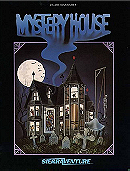
 2
2
 0
0
 0
0
